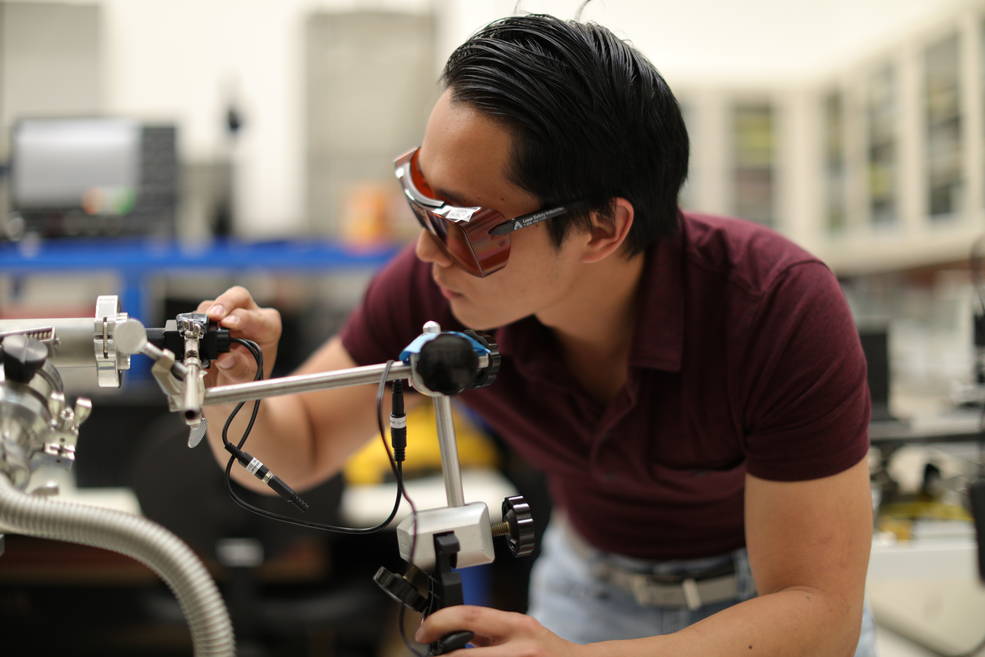
Electrostatics and Surface Physics Laboratory
The ESPL at NASA Kennedy Space Center is dedicated to investigations in electrostatics and surface physics problems with applications for space flight and planetary exploration. The laboratory has the capability to conduct electrostatic analyses and materials characterization to assist in the detection, mitigation, and prevention of electrostatic charge generation on space flight hardware and ground support equipment. The laboratory is also involved in dust mitigation efforts for Lunar and Martian exploration.
As part of Swamp Works, the ESPL can provide concepts, designs, technology development, technology demonstration, testing, and knowledge in support of the development of surface systems.

Technicians working on the electrostatic precipitator
Capabilities and Specialized Equipment
The following electrostatic testing, measurement, and analyses can be performed in high and low temperatures, pressures, humidity and at various atmospheric conditions:
- Surface resistivity measurements
- Charge decay measurements
- Triboelectric charge measurements
- Volume resistivity measurements of solids, liquids, and powders
- Adhesion coefficient determination
- Electric field measurements
- Surface charge distribution measurements
- Surface analysis techniques
- Embedded electrostatic sensors
- Plasma treatment of surfaces
- Electrospraying of liquids
- Hydrophobicity and contact angle measurements
- Electrical conductivity and grounding determination
- Dielectric breakdown strength determination
- Powder or liquid aerosol generation and measurement
- Radiofrequency (RF) emission detection from electrostatic discharge
- Charged grain detection and measurement
- Corona discharge, brush discharge, and Paschen breakdown measurements
- Liquid conductivity and powder resistivity measurements
- Laser Etching
- Susceptibility testing via Charged Device Model (CDM), Machine Model (MM), and Human Body Model (HBM)
- Lunar/Mars Vacuum Chamber
- Various vacuum systems (2 bell jars, 1 stainless-steel UHV-capable)
- Three environments chambers with stat-of-the-art electrostatic measuring equipment (static monitors, charge decay, coulomb meters)
- State-of-the-art Electrostatics Testing Equipment Atmospheric plasma
- Glow discharge sources
- Ultraviolet source and monochromator
- Optical emission spectrometer
- Sample preparation facilities
- Lunar and Mars dust simulants and 200 grams Apollo 14, 16, and 17 lunar regolith
- Vacuum electron/ion/ultraviolet sources for producing spacecraft charging environments
- High speed/low noise current amplifiers for monitoring small currents
